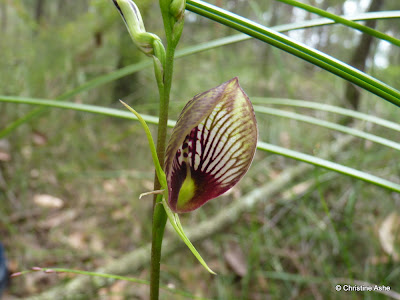Hah! that's what I wish I did. In reality I generally wake up long after they've welcomed the new day and have finished their breakfast and are thinking about morning tea. But that doesn't mean I miss out on their song - no. The little birds I enjoy most sing on and off all day. At this time of year, early winter in the southern hemisphere, I have the visitors on holiday to the coast. They fly in in search of a more reliable winter food source and I attempt to give them what they need in my garden. That means I have plants which flower in winter.
If you are wondering what to give someone who has everything as a gift then I suggest a birdbath. You will have to make sure it is positioned near a window where they can look out and enjoy the birds. If they spend a lot of time sitting at a desk, as I do, then outside the window is ideal. Here's mine. I can see it easily which helps me to remember to keep the water clean and the bushes a bit away so they don't obscure my view.
This photo, as are all my photos of the birds at the birdbath, is taken through glass. You can see it is not particularly close, and that means I don't startle the little birds as they bathe. Some of them are so paranoid they watch for a couple of minutes from inside the nearest bushes, zoom in for a bath, stay one microsecond in the water and flit back to the bushes to preen further. The paranoid ones are the survivors. Some little birds are very difficult to photograph because of this. I have to be in position, leaning against the window frame, and snap away and the first sign of movement and hope I capture something in the frame. I keep my Panasonic Lumix camera handy.
So what have I spotted so far?
The cutest little Eastern Yellow Robin
The Superb Fairy Wren
A dear little Silver Eye.
A pair of Yellow Faced Honeyeaters. I've seen up to four of these squabbling over the bath water.
A flock of Fire-browed Finches.
A Grey Fantail. He visited every day for about a week and then was gone again.
A small flock of Yellow Thornbills. These little birds stayed for a few weeks and had a regular bathing routine. They would fly in, scout out the surroundings and take turns to bathe. They always had a couple of lookouts strategically placed in the bushes, making sure all was well.
Watching, photographing and identifying all these little birds gives me a great deal of pleasure. Perhaps you could try it too?
























